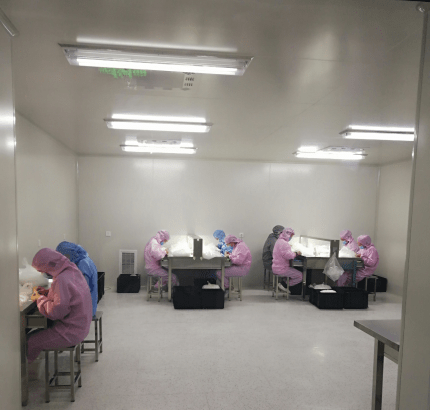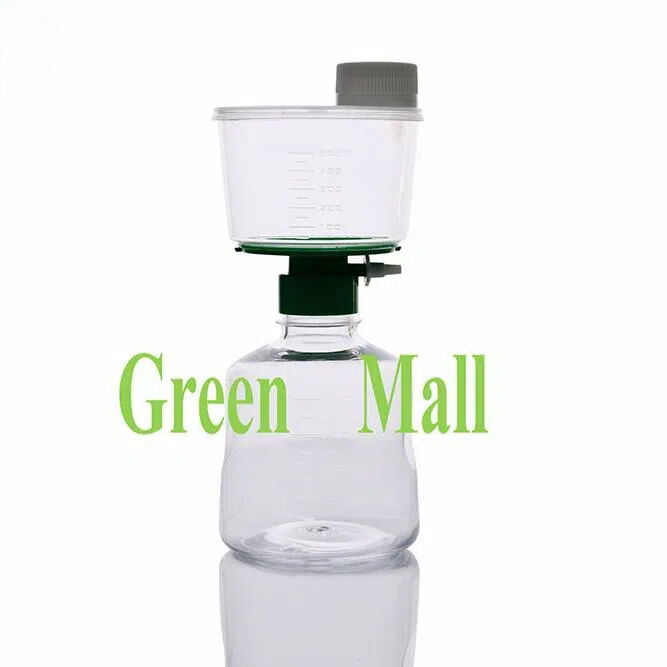Optimizing Laboratory Filtration Efficiency
Laboratory filtration is a critical step in many scientific processes, from media preparation to sample sterilization. The performance of this step depends greatly on the equipment chosen. One indispensable tool in many labs is the bottle top filter. Designed for convenience and efficiency, a bottle top filter allows scientists to filter liquids directly into a compatible receiving bottle. It eliminates the need for additional equipment such as vacuum flasks and adapters, streamlining workflows and improving sterility.
Choosing the right bottle top filter involves understanding your specific application requirements, including pore size, membrane material, filtration volume, and compatibility with chemicals or cell cultures. With the right selection, laboratories can ensure higher throughput, increased sterility, and reproducible results—all while reducing waste and operational complexity.
Understanding the Basics of Bottle Top Filters
What Is a Bottle Top Filter?
A bottle top filter is a filtration unit that attaches directly to the mouth of a storage bottle or receiving vessel. It usually consists of a membrane housed within a plastic funnel or unit that connects securely to standard laboratory bottles. These filters are primarily used for vacuum-driven filtration, where the liquid is pulled through the membrane into the bottle below.
Bottle top filters are commonly used in cell culture, media preparation, buffer sterilization, and protein purification. They offer ease of use, high throughput, and sterile processing—essential for research and production settings that require contamination-free solutions. Their disposability also minimizes the risk of cross-contamination between samples.
Key Components of a Bottle Top Filter
A typical bottle top filter includes a filtration membrane, a plastic support structure, and a cap or connector that fits standard lab bottles. Some advanced designs incorporate pre-filters, splash guards, or venting caps to handle larger particulates and maintain vacuum pressure.
The membrane is the heart of the system and defines the selectivity and efficiency of the filtration. Membrane materials, pore sizes, and construction types directly impact the application suitability. Understanding how these components interact is essential for selecting the right bottle top filter for your needs.
Choosing the Correct Pore Size
Matching Pore Size to Application
One of the most crucial decisions when selecting a bottle top filter is choosing the correct pore size. Pore size determines which particles, microbes, or molecules will be retained or passed through during filtration. For general sterilization of aqueous solutions, a 0.22 μm filter is standard, as it effectively removes bacteria and particulates.
For less stringent filtration where the goal is to clarify solutions without sterilizing, a 0.45 μm filter may be more appropriate. Some applications involving proteins or viruses may require even finer filtration. Matching the pore size to your specific workflow ensures both efficiency and accuracy in downstream applications.
Balancing Flow Rate and Filtration Precision
Finer pore sizes provide better sterility but can reduce flow rates. On the other hand, larger pores enable faster filtration but may not retain all contaminants. Laboratories must balance speed and purity depending on the priority of their process.
A bottle top filter with an optimized flow rate ensures that samples are processed quickly without sacrificing performance. Some high-performance filters achieve both high flow and high retention using advanced membrane technologies, but choosing the right configuration is key to avoiding bottlenecks in your laboratory.

Selecting the Appropriate Membrane Material
Membrane Compatibility with Chemicals and Media
The membrane material is as important as the pore size, especially when filtering chemical solutions or biological media. Common membrane materials include polyethersulfone (PES), cellulose acetate (CA), nylon, and polytetrafluoroethylene (PTFE). Each has unique chemical compatibilities and flow characteristics.
PES membranes are popular in cell culture and biological applications due to their low protein binding and fast flow. Nylon membranes are chemically resistant and work well with alcohols and organic solvents. PTFE membranes are highly hydrophobic, ideal for aggressive solvents and gases. Selecting the correct membrane ensures integrity, reproducibility, and sample safety.
Low Binding vs High Recovery Applications
Some applications demand minimal loss of target molecules, such as protein solutions or critical reagents. Low protein-binding membranes like PES or CA are preferred in such cases to minimize adsorption. For DNA or enzyme purification, recovery is a top priority, and using the wrong membrane can reduce sample yields significantly.
In contrast, some chemical filtration processes may tolerate a higher level of interaction, where membrane stability under harsh conditions takes precedence over sample recovery. Understanding this trade-off helps labs choose a bottle top filter that aligns with both process performance and material recovery expectations.
Assessing Volume and Throughput Requirements
Volume Capacity and Processing Scale
Bottle top filters are available in a wide range of volume capacities, typically from 150 mL to 1000 mL or more. For high-volume labs or production settings, selecting a filter that matches the batch size can save time and labor. Using a bottle top filter that’s too small for the job leads to frequent replacements and inefficient workflows.
Large-capacity filters also often feature wider membranes and reinforced housings to accommodate higher pressure and fluid volumes. When working with multiple samples or large solution batches, high-capacity bottle top filters improve lab throughput and consistency.
Considerations for High-Throughput Laboratories
In labs with heavy filtration demands, selecting bottle top filters that support rapid processing without frequent clogging or slowdowns is essential. High-flow membranes, ergonomic designs, and leak-resistant seals all contribute to smoother workflows in high-throughput environments.
Automation-friendly bottle top filters may also be considered for labs integrating filtration into larger workflows. Their uniform design and predictable performance allow seamless integration into robotic or semi-automated systems.
Ensuring Sterility and Safety Standards
Pre-Sterilized Options for Critical Applications
Many bottle top filters come pre-sterilized via gamma irradiation or electron beam sterilization, ensuring that no microorganisms are introduced during use. This is particularly important in cell culture, virology, and pharmaceutical workflows where sterility is non-negotiable.
Pre-sterilized bottle top filters also eliminate the need for in-house sterilization protocols, saving time and reducing the risk of contamination. For critical applications, always verify the sterility assurance level (SAL) and documentation provided by the manufacturer.
Leak-Proof Design and Handling Safety
In addition to sterility, physical safety is a key factor. Bottle top filters must maintain a tight seal with receiving bottles, especially during vacuum filtration. Poorly fitting filters can lead to leaks, spills, or exposure to biohazardous material.
Ergonomic design, reinforced collars, and universal thread compatibility help ensure that filters are both safe and easy to use. When selecting a bottle top filter, evaluating structural integrity and material quality is just as important as assessing performance specifications.
Evaluating Cost and Sustainability
Single-Use vs Reusable Filter Systems
While most bottle top filters are single-use, some labs explore reusable options to reduce waste. However, reuse must be carefully managed to prevent cross-contamination and performance degradation. Disposable filters provide the highest confidence in sterility and are often preferred for regulated environments.
The decision between reusable and disposable systems often depends on the balance between sustainability goals and operational requirements. Bottle top filter selection should consider not just upfront cost but the total cost of use, including labor, waste disposal, and risk mitigation.
Environmental Impact and Material Selection
With growing attention to lab sustainability, choosing bottle top filters made from recyclable plastics or low-impact materials is becoming more important. Some manufacturers offer filters designed for minimal environmental footprint, including recyclable housings and low-energy production processes.
Assessing the lifecycle of bottle top filters—from packaging to disposal—can inform procurement decisions that align with institutional sustainability initiatives. For eco-conscious labs, making the right choice helps meet green lab certification criteria and reduce environmental burden.
Compatibility with Lab Bottles and Equipment
Thread Type and Neck Size
Not all bottle top filters fit every lab bottle. Compatibility depends on the neck thread size (typically GL45 or similar standards) and bottle geometry. Selecting a bottle top filter with universal threading or included adapters ensures a secure and leak-proof fit across different brands or bottle types.
A mismatch between the filter and bottle can compromise vacuum pressure, cause spills, or lead to equipment damage. Always verify threading specifications and test fit if working with custom or third-party bottles.
Integration with Vacuum Systems
Bottle top filters are commonly used with vacuum filtration setups to increase speed. Ensuring that the filter’s design supports vacuum pressures without collapsing or deforming is essential. Reinforced bottle top filters maintain their shape even under suction, preserving filter integrity and preventing sample loss.
Some advanced models include vacuum adapters or pressure relief valves to protect against over-pressurization. For labs relying heavily on vacuum-driven workflows, bottle top filters should be chosen for structural resilience as well as filtration performance.
FAQ
What is the purpose of a bottle top filter in the lab?
A bottle top filter is used to sterilize or clarify liquids by filtering them directly into a receiving bottle. It simplifies workflows by eliminating the need for separate filtration apparatus and ensures sterility in media, buffers, or reagents.
How do I choose the right pore size for my application?
Select a 0.22 μm pore size for sterilization and a 0.45 μm pore size for clarification. The choice depends on whether you need to remove bacteria or simply filter out particulates. Finer pore sizes offer more thorough filtration but slower flow rates.
Are all bottle top filters compatible with any lab bottle?
No, bottle top filters must match the thread size and bottle neck type. Most use GL45 threads, but compatibility should be checked, especially with custom or non-standard bottles. Some filters include universal adapters for flexibility.
Can bottle top filters be reused?
While technically possible, reusing bottle top filters is not recommended for sterile applications due to contamination risks. Disposable filters provide greater assurance of sterility and consistent performance, especially in sensitive or regulated workflows.
Table of Contents
- Optimizing Laboratory Filtration Efficiency
- Understanding the Basics of Bottle Top Filters
- Choosing the Correct Pore Size
- Selecting the Appropriate Membrane Material
- Assessing Volume and Throughput Requirements
- Ensuring Sterility and Safety Standards
- Evaluating Cost and Sustainability
- Compatibility with Lab Bottles and Equipment
- FAQ




